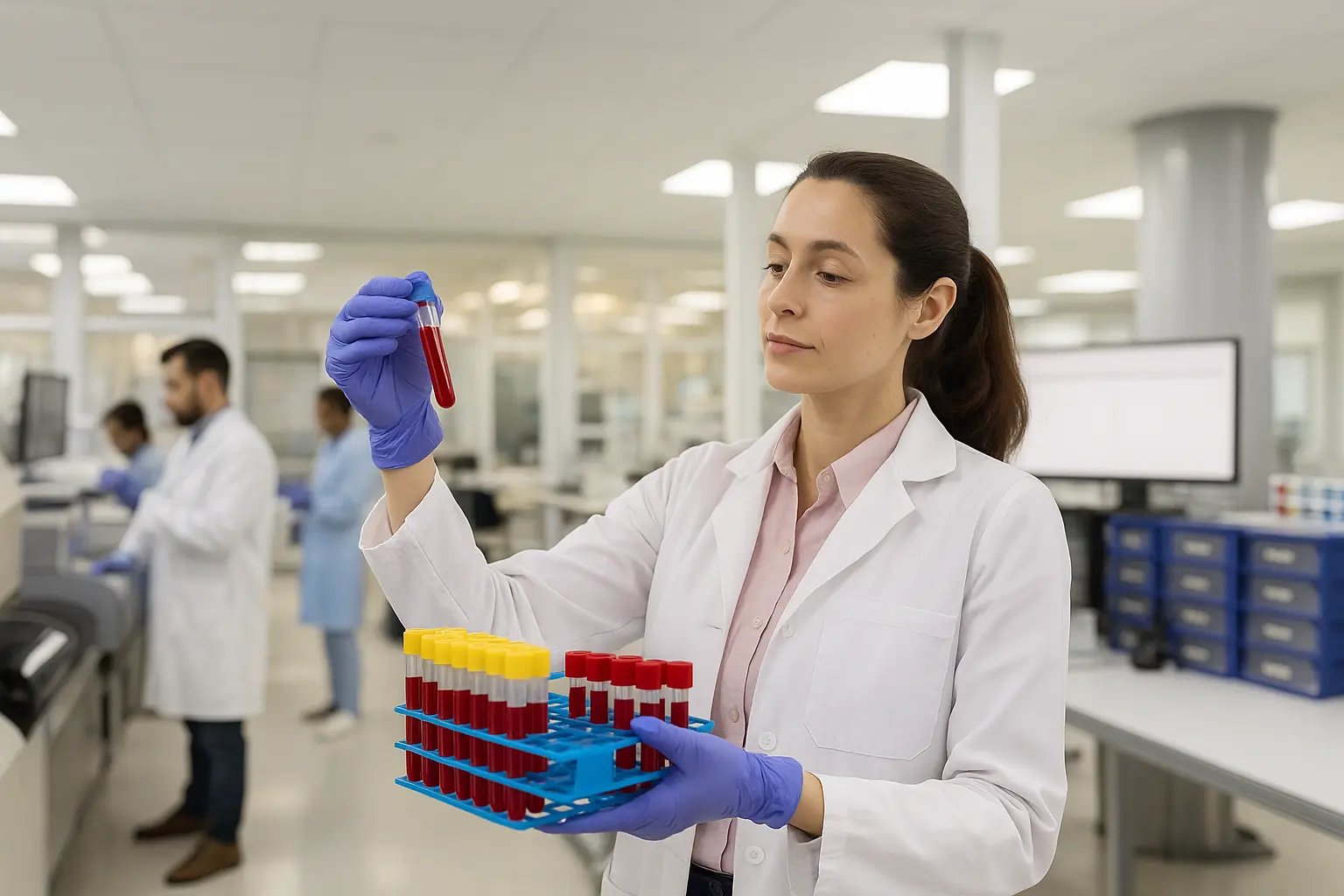Blog
Understanding the Real Costs of Non-Integrated RCM Systems
November 17, 2025
In most cases, two is better than one, but that’s certainly not the case when comparing LigoLab’s fully integrated informatics platform against standalone laboratory revenue cycle management systems that require interfaces with laboratory information systems (LIS systems) and other laboratory software systems.
In this LigoLab blog post, we’ll deep dive and uncover the deficiencies that plague non-integrated laboratory billing solutions. We’ll also highlight the numerous benefits that can be achieved soon after independent pathology groups and clinical laboratories transition from a legacy laboratory billing system to LigoLab’s comprehensive pathology lab management system.
We’ll show you how a non-integrated laboratory billing system requires more labor, has limited scalability, and is subject to data silos and compliance issues. Additionally, we’ll emphasize the risk exposure and opportunity costs, such as missed collections, the need for more manual labor, questionable operational and financial visibility, fragmented workflows, and increased maintenance expenses.
Lastly, we’ll compare that with LigoLab’s interdependent approach to lab revenue cycle management, an approach characterized by an integrated LIS system & lab RCM module infrastructure powered by automation, customization, and best-in-class support.
We’ll explain how this new LIS lab approach to the RCM cycle and pathology lab management creates an efficient and reliable lab billing workflow that significantly decreases denials and stops revenue leakage, while also increasing the rate of first-pass claim payments.
Discover More: Stability and Performance: The Two Most Important Aspects of a Modern Laboratory Operation

Beware of Low-Cost Laboratory Billing Solutions
When researching a laboratory billing system for your financial operation, it’s important to look beyond the initial cost savings and carefully evaluate the potential long-term implications.
Here are some important factors to consider before moving forward with a non-integrated and less expensive lab billing application:
Additional Labor Costs: A less expensive laboratory billing system lacks automation, resulting in increased manual work for your staff. This not only poses a compliance risk for your organization but also risks potential revenue loss.
Days in AR: This lack of automation and data silos created by multiple laboratory software systems also negatively affects your lab's ability to quickly and accurately submit claims or take corrective action before a claim is denied. As denials increase, the claims backlog grows, resulting in more time spent on denials and write-offs, creating an infinite loop.
Compliance and Accuracy Issues: Manual data entry is a hallmark of a less expensive laboratory billing system. This will subject your lab to human errors that lead to lab billing and coding inaccuracies and compliance problems.
Scalability Issues: A less expensive laboratory billing system might be able to handle your lab’s current volume, but what about growing volumes and increased complexity? The less expensive option will likely struggle, hindering your lab’s scalability.
Integration Challenges: Simpler laboratory billing solutions will also likely struggle to integrate with your lab’s existing lab information system, exposing the organization to inefficiencies and an increased likelihood of errors.
Limited Support and Training: Lower-cost lab billing systems often lack responsive customer support and ongoing training, making it difficult for staff to use the system effectively. The result is reduced productivity and a higher risk of errors.
Add-on Costs: The laboratory billing system you’re considering may appear less expensive, but that might not be the case when you fully understand the hidden or add-on costs that come with it.
For example, lab RCM software vendors usually charge substantial amounts for modifications, configurations, and automated clinical lab workflow. This is also typically associated with long project turnaround times, creating a rigid structure with limited flexibility and control over all desired changes.
Data Silos: Cheaper laboratory billing solutions fail to centralize all lab data, resulting in fragmented and inconsistent information spread across various laboratory software systems. This hinders efficiency, transparency, and decision-making.
When deciding on a laboratory billing system, it’s highly recommended that you consider more than the cost. Look beyond that and assess the laboratory billing solution’s impact on your business's operations and performance.
The best billing software for labs is characterized by an integrated and robust LIS system & laboratory billing solution that offers seamless automation, enhanced data management, and dedicated support that will significantly improve revenue capture and make common lab billing issues a thing of the past.
On-Demand Webinar: Outsourced vs. In-House Laboratory Billing - How to Make the Right Choice for Your Lab

Laboratory Billing System Opportunity Costs
When evaluating laboratory billing solutions, decision-makers often overlook the total cost of ownership (TCO). TCO measures the total expense of a system over its entire lifecycle, including both direct and indirect costs.
To help you better understand the TCO (also known as long-term price) associated with the selection of a siloed laboratory billing system, we’ve compiled a list of opportunity costs that should also be considered:
Time and Efficiency: Operating within isolated laboratory software systems for LIS medical processes and laboratory revenue cycle management creates a fragmented clinical lab workflow that demands extra time and resources.
Data Integrity and Accessibility: When utilizing separate laboratory software systems, conflicting data between the LIS system and the laboratory billing system is a constant issue that can result in revenue losses.
Synchronization of Master Files: Master Files must be manually synchronized in standalone laboratory software systems, a process that can trigger unpredictable workflow outcomes, inefficiencies, and potential errors.
Customer Service: Managing two separate laboratory software systems often results in slower response times that negatively affect customer service quality.
Maintenance: The cumulative expenses to maintain two separate laboratory software systems can be substantial.
Innovation: Separate laboratory software systems may impede the adoption of new features or enhancements to clinical lab workflow.
White Paper: The Connected Laboratory - Leveraging Medical LIS & Lab RCM Solutions to Grow Your Business
Now compare the above opportunity costs with Ligolab’s integrated laboratory information system and lab billing platform:
- The platform optimizes clinical lab workflow, preserves time, and maximizes operational efficiency.
- The platform’s unified LIS Lab infrastructure ensures real-time data synchronization, improving both integrity and accessibility. Unlike disconnected LIS systems and laboratory billing solutions, there’s no need to manually sync data (including Master Files) because everything is stored within one system.
- The integrated medical LIS & laboratory billing system combines to create a seamless customer service experience and complete accessibility and control over all lab data. This customer service includes continuous review of all queues by LigoLab’s lab billing team to identify any issues early on and aid lab partners with corrective measures. This is one of many examples where LigoLab, a trusted pathology lab software company, takes full responsibility for all of a lab’s informatics (operational, technical, and financial).
- A laboratory can achieve noteworthy cost reductions by consolidating the functionality of two laboratory software systems into a solitary, integrated pathology lab management platform.
- Having one pathology lab management system with an interdependent LIS system and lab RCM functionality also provides operational and technical visibility that can’t be matched, creating tremendous opportunities for automation to be added to the clinical lab workflow.
- The medical LIS software and lab billing platform is also meticulously crafted with future preparedness in mind, receiving consistent updates to align a lab organization with the evolving technological landscape.
With LigoLab, opportunity costs become a non-factor as you gain a robust, scalable, and integrated LIS laboratory information system and lab RCM solution with a proven track record of driving laboratory growth and success.
Turn Your Lab Revenue Cycle Management into a Priority
Operating a successful lab business is challenging at the best of times, so why make it even harder by continuing to tolerate an old, disconnected, and costly laboratory billing process?
Conventional wisdom still says that in-house lab billing is a backend process that begins after all services have been rendered. This is a flawed way of doing business, especially when you consider some of the major advantages that come with an alternative and integrated upstream approach:
- With LIS system & lab RCM integration, clinical labs and pathology groups gain upfront access to third-party RCM tools that enable the immediate capture of important lab billing information, such as patient demographic and address validation, insurance discovery, and eligibility.
- Integration between the LIS system and lab RCM modules eliminates data silos, which facilitates the real-time tracking of each procedure performed by the laboratory.
- Integration supported by LigoLab’s automation engine creates a transparent and seamless environment optimal for accurate coding and revenue capture. Laboratory billing processes that were once mostly manual and prone to errors are now automated with precise pre-coding in the LIS module, before being accurately transferred to the billing encounter entity within the RCM module.
Discover More: Maximizing Your Lab’s Profitability: The Case for In-House Lab Billing
At LigoLab, we’ve long been proponents of the paradigm shift taking place in our industry, and we’re encouraged as more and more medical labs are starting to understand the inherent advantages that come with an integrated LIS system & lab RCM solution that makes lab billing a priority.
Unfortunately for most, this is out of necessity as shrinking reimbursements, the high cost of labor, unique payer requirements, and increased regulations are taking a heavy toll on labs that stubbornly continue to operate as they have in the past.
To learn more about the many advantages that come with an all-in-one laboratory information system that unites lab RCM functionality, we’ve included a link to our White Paper on this subject:
White Paper: How Labs Can Achieve Financial Stability During Turbulent Times

The LigoLab Difference: Advanced Laboratory Billing Solutions to Transform Clinical Lab Workflow
As highlighted throughout this blog post, LigoLab’s laboratory billing system outperforms its standalone RCM system competitors by leveraging an integrated approach to diagnostic lab software and technical and financial operations.
- LigoLab’s lab partners consistently report increases in ongoing revenue by 15-35% within three months of implementation. This is a testament to the integrated laboratory information system’s immediate impact and effectiveness, and a clear indication of just how much money non-integrated labs are leaving on the table.
- With the LigoLab platform, on average, 95% of claims are paid on the first pass. This number represents a significant increase in error-free claims that improves cash flow and revenue capture. Time and resources spent on resubmissions and claim follow-ups are also greatly reduced.
- The LigoLab platform and service team automate tasks wherever and whenever possible. By doing this, the pathology software company has consistently managed to reduce manual labor by 30% for its partner labs. This significant reduction leads to a more streamlined, productive, and cost-effective operation with an enhanced compliance posture.
- LigoLab’s dedicated team of lab revenue cycle management experts continuously monitors queues and clinical lab workflow to prevent mistakes and inefficiencies, and its engineers work tirelessly with lab partners to build custom automation and strategies that refine and enhance their lab's operations. LigoLab understands its success is intrinsically aligned with lab partners, and it goes above and beyond to ensure its solutions deliver the desired results.
At LigoLab, we’ve provided a flexible, all-in-one laboratory information system with advanced embedded laboratory billing solutions for growing clinical laboratories and pathology groups since 2006, thereby providing them with what they need to modernize and grow efficiently.
Discover More: Navigating the Future of Pathology: The LigoLab Advantage
Contact LigoLab to schedule a brief introductory call or a laboratory billing software demonstration and see how a fully integrated informatics platform can unite and digitally transform a lab’s financial, administrative, and technical operations.
Act Now: Contact a LigoLab Product Specialist!







